
NYC performer Aki Onda and Yokohama sound artist Nao Nishihara began collaborating in 2015 while Nishihara was residing in NY on an Asian Cultural Council grant, returning in 2016 for this live performance exploring the architecture and acoustics of ISSUE's 22 Boerum Place theater, installing handmade instruments and analog equipment within a visually arranged set-up.
In Stock
Quantity in Basket: None
Log In to use our Wish List
Shipping Weight: 3.00 units
Sample The Album:
Aki Onda-tapes, feedback, amps, bells, cymbals, found objects
Nao Nishihara-bells, Chinese cymbals, bird and animal calls, wood and metal pieces, self made bowing instrument, "Sloth," Turkish sipsi, nose flute
Click an artist name above to see in-stock items for that artist.
Label: Ftarri
Catalog ID: ftarri-975
Squidco Product Code: 30195
Format: CD
Condition: New
Released: 2020
Country: Japan
Packaging: Cardstock Sleeve, sealed
Recorded at ISSUE Project Room, in Brooklyn, New York, by Bob Bellerue.
"Aki Onda has lived and based his activities in New York for many years. His solo work includes "Cassette Memories," a field recording project using portable cassette recorders that has been ongoing for the past 30 years, as well as concerts, installations and exhibitions in countries around the world. Onda has collaborated frequently with a diverse range of artists including Akio Suzuki, Annea Lockwood, David Toop and Rie Nakajima. Additionally, as a curator and organizer he has planned and produced a variety of festivals and events. In 2020, Onda is bringing to a close his two decades in New York and beginning new endeavors in Mito, Ibaraki Prefecture.
Born in 1976, Nao Nishihara carries out sound-related activities including art and performance using sound, recordings, and musical instrument creation. Nishihara acquired a unique aesthetic and style through exchanges with dancer Min Tanaka and musician Keiji Haino, and the influences of ethnomusicologist Fumio Koizumi and Shoichi Ozawa, who was known for his folklore collection. This is apparent in his performances combining sound-making objects and bodily movement. He enthusiastically carries out installations, exhibitions and performances both inside and outside Japan.
Onda and Nishihara started collaborating in 2015, when the latter stayed for a time in New York. In November 2016, when Nishihara visited New York again, the two took advantage of the opportunity and gave a performance at ISSUE Project Room's theater at 22 Boerum Place in Brooklyn. The edited recording of that performance is contained in the five tracks on this CD.
Onda used tapes, feedback, amps, bells, cymbals and found objects, while Nishihara used bells, Chinese cymbals, bird and animal calls, wood and metal pieces, a self-made bowing instrument and more. The venue, with its marble floors and high, arched ceiling, produces out-of-the-ordinary sound reverberation. To make the best possible use of the space's characteristics, Onda and Nishihara placed various instruments, devices and objects here and there around the room, added physical movement, and produced diverse sounds that were rough and wild at times, subtle and delicate at others.
The CD includes detailed liner notes (in English and Japanese) by Nick Scavo, who experienced the performance live in the venue."-Ftarri
Sound as a Moment, Sculpted in Time by Nick Scavo
"In November 2016, Aki Onda and Nao Nishihara staged a performance a few days after the devastating results of the United States presidential election. The five recordings on this CD are constructed from edited material from this context: an abstract spatialization of the unique arrangement the two artists had installed in the performance space. I remember the nearly 90-minute performance well, not only for the expanded sculptural setting the artists had set up--where handmade instruments, analogue equipment, various found and everyday objects, and lighting were carefully organized--but also for the discernable anxiety permeating the room as the audience dealt with the news. The event took place at ISSUE Project Room's 22 Boerum Theater in Downtown Brooklyn, well known for its exceedingly resonant acoustics, intensified by marble floors and a high vaulted ceiling. The acoustics of the space are anxiety-inducing and stark; a dropped coin will ring for long durations of time, swelling and trailing off into silence. The audience was seated within the performance space, surrounded by elements of the installation and, in turn, surrounding the primary action of the performers. Strange apparatuses hung from a long, thin wire running from wall to wall, while the space was scattered with Nishihara's self-made wooden and metal machines and Onda's unique collage of analogue electronics equipment, bells, and glass pieces. The scene established a vast, ambling expanse that was a kind of homemade alternative vision--a space wherein the anxieties of the time could be hyperbolically suspended, sculpted, and rearranged on an elemental level. The arrangement was a careful visual scene that framed their sonic explorations, and the artists used this sculptural space as a "stage" for an inventive, open-ended, and spontaneous approach to the boundless possibilities of sound as a spatial phenomenon. Overlapping sonic events occurred within the discrete relationships between these objects, made more pronounced through their enclosure in that space, at that time. Here, the drama and intensity of the preceding days was also an event, a massive global drama finding sudden and microscopic cadence with the movement of objects and generation of sound.
Onda and Nishihara have individual relationships with this performative approach, each bringing their own respective practices together as a shared vocabulary. Aki Onda has a long history of performing within expanded sculptural settings, including his numerous performances with Akio Suzuki, David Toop, Rie Nakajima, Annea Lockwood, and others. This approach suggests roots in Fluxus art, specifically the work of Takehisa Kosugi as evidenced in Theatre Music, a piece that featured a cardboard rectangle imprinted with a spiral of smudge-marks from footsteps. In Kosugi's piece, the installation of the object was paired with the simple instruction of a word-score: "keep walking intently." This also recalls Alvin Lucier's Chambers, itself a word-score piece that asks the performer to "collect or make large and small resonant environments" (seashells, subway stations, canyons) followed by the simple directive: "find a way to make them sound" (blowing, cracking, exploding). The intent focus on sonically activating a framed and arranged setting forms the basis for the sounds on this album. During the performance, Nishihara used kinetic sound machines that autonomously operated as individual "performers," including pulley-machines that clicked and moved themselves across a room-length wire, as well as a small wheeled cart that was in fact an assemblage of various sound making objects held together with rope. These devices also reference early Fluxus history, including the work of artist Joe Jones, who often used invented machines in his performances. These machines included "The Longest Pull Toy in the World" (a pedaled vehicle that pulled handmade instruments on wheels) or small drone machines such as those used in 1969 when he opened his own "Music-Store" in New York City (where anyone could press the numerous door buttons of the shop to play the machines).
Although referencing these various historical precedents, Onda and Nishihara depart from any tactical or directive method, instead favoring the open-ended and nonhierarchical exploration of their specific sculptural arrangement. This approach, highly cultivated in strands of each of the artists' respective practices, frees sound from its usual striated contexts while also emphasizing specific sonic and physical relationships through distinct visual and technical cues. Both Onda's various found objects, as well as Nishihara's "musician machines" (such as a kick drum triggered by a rope attached to his toe) behave as individual characters, performers, and sonic sources throughout these five recordings. There is a vast expanse of distinct objects scattered across the sculpture--everything from a box fan sitting on a microphone, producing sub-bass frequencies, to a table of Onda's extensive array of objects and hidden effects units that process acoustic sources. The movement of the artists' bodies are also a consistent and dynamic sound source, providing an almost ceremonial feel as stamped feet, claps, and other motions participate in the sonic array. The first recording opens with the long bell-tones of another of Nishihara's tools--a long, fishing-pole-like rod with a metal sphere on the end. Nishishara would lightly hit the metal end of the tool against the resonant surfaces and marble floors of the performance space, producing sweeping, bell-like tonalities that would reverberate wildly, often reflecting off of other objects arranged in the space. The woodblock clicks and electronic noises heard in the second recording come directly from one of the "machine performers" dragging itself along a taut wire, while Onda presents broad, empyrean territories of bass and unknown tonalities from his electronics, further blurring boundaries between "outside" and "inside" sound sources as gongs and cymbals are processed and morphed into similarly gnarled shapes. These overlapping sounds build to dramatic heights as the "timekeeping" clicks of the music machines set a rhythmic stage for other sound sources to collide, ascend, and transform--building and releasing tension like a magnificent improvisational group composed of objects.
Not widely known outside of his native Japan and experimental circles in New York, Nishihara is an active researcher and practitioner of sound art, recording, performance, and instrument production. Having studied closely with Min Tanaka and Keiji Haino, Nishihara possesses a philosophy that emphasizes the physicality of sound and body, whether it be how a "sound can be a human," coming from Haino, or how the "body is flexible and doesn't exist," from Tanaka. This exchange between sound becoming a body, or a body vanishing into sound emphasizes their innate reciprocity. Perhaps also loosely inspired by Tanaka, Nishihara performs his bodily movements in "the style of a clown or street performer from the medieval era." Especially here, Nishihara attests to his other influences, from the ethnomusicologist Fumio Koizumi and Japanese folk culture researcher Shoichi Ozawa. This kind of appreciation for an insurgent spirit is certainly present through these recordings, especially in his playing of various slide whistles, flutes, and wind instruments throughout the album's final two pieces. During the performance, Nishihara portrayed this sentiment through various character poses, such as an arched stance with a drum on his back. At one point he surprised the audience with a lit candle in the middle of the drum head as Onda faded the lights completely to black. Given the political circumstances of the original performance, occasionally these poses would contort into intense, nearly macabre depictions of a kind of madness or sinister force--a harlequinesque character that formed a diabolical narrative throughout Nishihara's motions. Scenes such as these, although imbued with visual affect during the performance, are given abstract space to recede into a more mysterious sonic space, one loosely referencing the visual, but separated into a shadowy atmosphere and speculative space where the sound's liberated presence reigns. Onda has a keen understanding of how this liberated atmosphere forms a kind of open communication process in dialogue with other performers. Onda cultivates situations where improvising artists trace their own particular performative methods across a given site, treating a recording as a kind of abstract "scenography," where objects and sounds are arranged. Here, in the suspended space of the recording, Onda and Nishihara's site-specific sculpturearrangement is given an even broader plan to spread out and dissolve into a seemingly infinite number of forms, as the sounds develop into a cascading flow.
These five recordings are a striking display of Onda and Nishihara's handling of the covalent relationships between objects: exchanges between the minute actions of a given space and the immense dramas of world activity. An astounding plea for the intimacy of materials at the most fundamental level, the record itself is an abstract sculpture, one composed of multiple sonic grains orbiting around their specific environment--installed in the here and now--at the precise moment the record is played."
Artist Biographies
• Show Bio for Aki Onda "Aki Onda is a composer, performer, visual artist, and curator. Onda was born in Japan and currently resides in New York. He is particularly known for his "Cassette Memories" - works compiled from a "sound diary" of field-recordings collected by using the cassette Walkman over a span of last quarter-century. He creates compositions, performances, and visual artworks from those sound memories. Onda often works in interdisciplinary fields and collaborates with filmmakers, visual artists, and choreographers. His on-going projects include "Nervous Magic Lantern" with Ken Jacobs, improvisation trio with Michael Snow and Alan Licht, visual-sound installation/performance with Raha Raissnia, and site-specific happening with Akio Suzuki. Onda has performed at The Kitchen, MoMA, P.S.1 MOMA, ISSUE Project Room (New York), Time-Based Art Festival (Portland), Images Festival (Toronto), ICA (London), Louvre Museum, Palais de Tokyo, Fondation Cartier (Paris), Argos, Bozar, Wiels (Brussels), International Film Festival Rotterdam, Nam June Paik Art Center (Seoul), Sound Live Tokyo (Tokyo) and many others. Onda is also active as a curator. He is a director of TPAM (Performing Arts Meeting in Yokohama) in Japan, and organized major performances and exhibitions throughout North America." ^ Hide Bio for Aki Onda • Show Bio for Nao Nishihara Yokohama, Japan-based sound practitioner Nao Nishihara describes his interest as works concerning sound, with sound activities such as research, sound art, music, performance and so on. His work has been featured in exhibitions at the National Gallery Singapore and the Hiroshima City Museum of Contemporary Art. Since 2015 he has collaborated with NY-based sound artist Aki Onda. ^ Hide Bio for Nao Nishihara
7/1/2025
Have a better biography or biography source? Please Contact Us so that we can update this biography.
7/1/2025
Have a better biography or biography source? Please Contact Us so that we can update this biography.
Track Listing:
1. Tamashii 5:23
2. Buriki-No-Tokage 13:36
3. Tenki-Ame 5:26
4. Tomari-Gi 6:58
5. Nora 14:00
Improvised Music
Free Improvisation
Electro-Acoustic
Electro-Acoustic Improv
Sound, Noise, &c.
Recordings Utilizing the Natural Resonance of a Space
Percussion & Drums
Asian Improvisation & Jazz
Search for other titles on the label:
Ftarri.


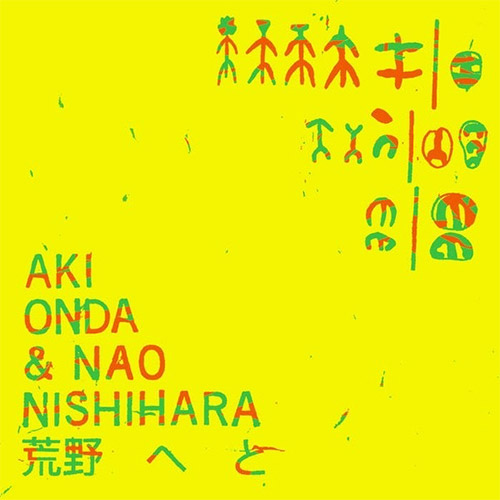

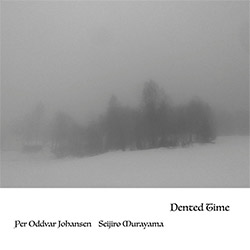
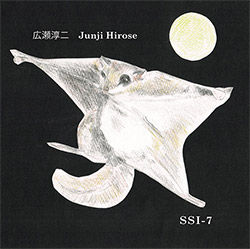

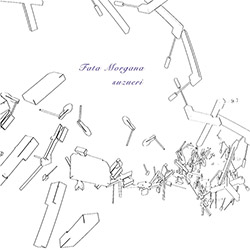

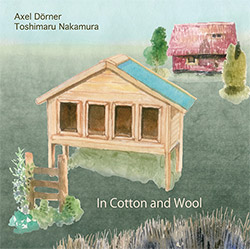

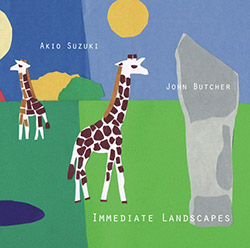



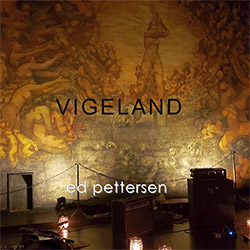
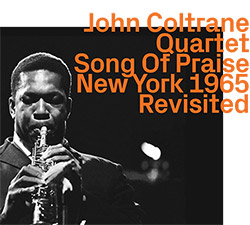


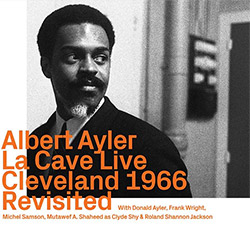




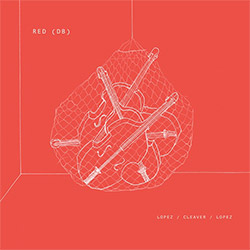



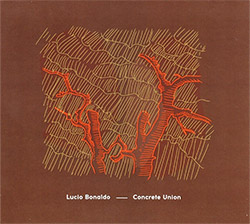










![Deupree, Jerome / Sylvie Courvoisier / Lester St. Louis / Joe Morris: Canyon [2 CDs]](https://www.teuthida.com/productImages/misc4/36404.jpg)


![Eternities: Rides Again [CASSETTE]](https://www.teuthida.com/productImages/misc4/36247.jpg)

![Lopez, Francisco: Untitled (2021-2022) [2 CDs]](https://www.teuthida.com/productImages/misc4/36438.jpg)




![Eventless Plot | Haarvol: The Subliminal Paths [CASSETTE + DOWNLOAD]](https://www.teuthida.com/productImages/misc4/36232.jpg)












![Eventless Plot | Francesco Covarino: Methexis [CASSETTE + DOWNLOAD]](https://www.teuthida.com/productImages/misc4/36231.jpg)



![Das B (Mazen Kerbaj / Mike Majkowski / Magda Mayas / Tony Buck): Love [VINYL]](https://www.teuthida.com/productImages/misc4/36329.jpg)


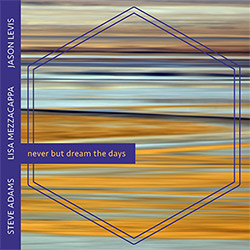
![Hemphill Stringtet, The: Plays the Music of Julius Hemphill [VINYL]](https://www.teuthida.com/productImages/misc4/36409.jpg)

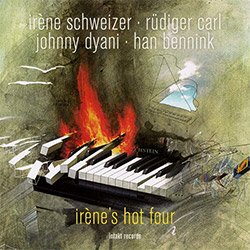

![Halvorson, Mary Septet: Illusionary Sea [2 LPS]](https://www.teuthida.com/productImages/misc4/17952.jpg)

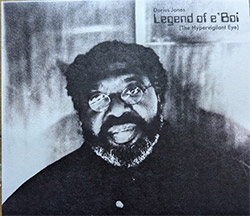




![Money : Money 2 [2 CDs]](https://www.teuthida.com/productImages/misc4/35894.jpg)




![Klinga, Erik: Elusive Shimmer [VINYL]](https://www.teuthida.com/productImages/misc4/36258.jpg)
![CHANGES TO blind (Phil Zampino): Volume 9 - I Wave on a Fine Vile Mist [CD + DOWNLOAD]](https://www.teuthida.com/productImages/misc4/36061.jpg)

![Wallmart / Rubbish: Asset Protection [split CD]](https://www.teuthida.com/productImages/misc4/35900.jpg)


![+Dog+: The Family Music Book Vol. 5 [2 CDs]](https://www.teuthida.com/productImages/misc4/35897.jpg)
![Kuvveti, Deli : Kuslar Soyledi [CASSETTE w/ DOWNLOAD]](https://www.teuthida.com/productImages/misc4/36107.jpg)

![Nakayama, Tetsuya: Edo Wan [CASSETTE w/ DOWNLOAD]](https://www.teuthida.com/productImages/misc4/36105.jpg)
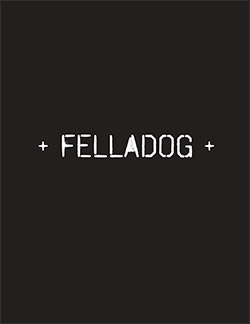
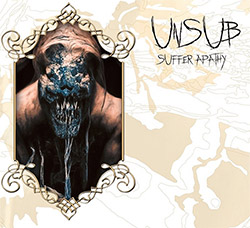


![Yiyuan, Liang / Li Daiguo: Sonic Talismans [VINYL]](https://www.teuthida.com/productImages/misc4/35957.jpg)
![Brown, Dan / Dan Reynolds: Live At The Grange Hall [unauthorized][CASSETTE]](https://www.teuthida.com/productImages/misc4/36245.jpg)








![Palestine, Charlemagne / Seppe Gebruers: Beyondddddd The Notessssss [VINYL]](https://www.teuthida.com/productImages/misc4/36206.jpg)
![Palestine, Charlemagne / Seppe Gebruers: Beyondddddd The Notessssss [NEON GREEN VINYL]](https://www.teuthida.com/productImages/misc4/36207.jpg)

![Laubrock, Ingrid: Purposing The Air [2 CDs]](https://www.teuthida.com/productImages/misc4/35639.jpg)

![Yoko, Ono / The Great Learning Orchestra: Selected Recordings From Grapefruit [2 CDs]](https://www.teuthida.com/productImages/misc4/35841.jpg)









![Zorn, John / JACK Quartet: The Complete String Quartets [2 CDs]](https://www.teuthida.com/productImages/misc4/35609.jpg)

![Lonsdale, Eden: Dawnings [2 CDs]](https://www.teuthida.com/productImages/misc4/35480.jpg)



![Sorry For Laughing (G. Whitlow / M. Bates / Dave-Id / E. Ka-Spel): Rain Flowers [2 CDS]](https://www.teuthida.com/productImages/misc4/35985.jpg)

![Rolando, Tommaso / Andy Moor : Biscotti [CASSETTE w/ DOWNLOADS]](https://www.teuthida.com/productImages/misc4/36106.jpg)


![Electric Bird Noise / Derek Roddy: 8-10-22 [CD EP]](https://www.teuthida.com/productImages/misc4/35970.jpg)








![Elephant9 : Mythical River [VINYL]](https://www.teuthida.com/productImages/misc4/34624.jpg)



![Elephant9 with Terje Rypdal: Catching Fire [VINYL 2 LPs]](https://www.teuthida.com/productImages/misc4/35355.jpg)
![Deerlady (Obomsawin, Mali / Magdalena Abrego): Greatest Hits [VINYL]](https://www.teuthida.com/productImages/misc4/34876.jpg)







![Surplus 1980: Illusion of Consistency [CD]](https://www.teuthida.com/productImages/misc4/35069.jpg)
![Staiano, Moe: Away Towards the Light [VINYL + DOWNLOAD]](https://www.teuthida.com/productImages/misc4/35037.jpg)
![Coley, Byron: Dating Tips for Touring Bands [VINYL]](https://www.teuthida.com/productImages/misc4/17906.jpg)

![Lost Kisses: My Life is Sad & Funny [DVD]](https://www.teuthida.com/productImages/misc4/lostKissesDVD.jpg)